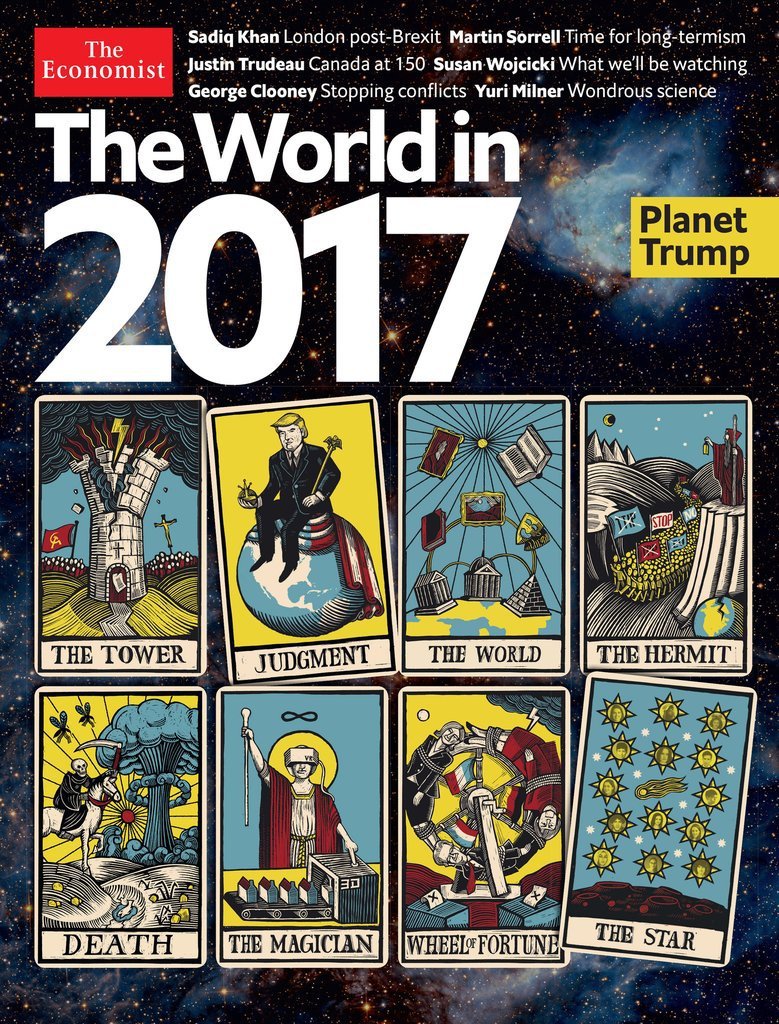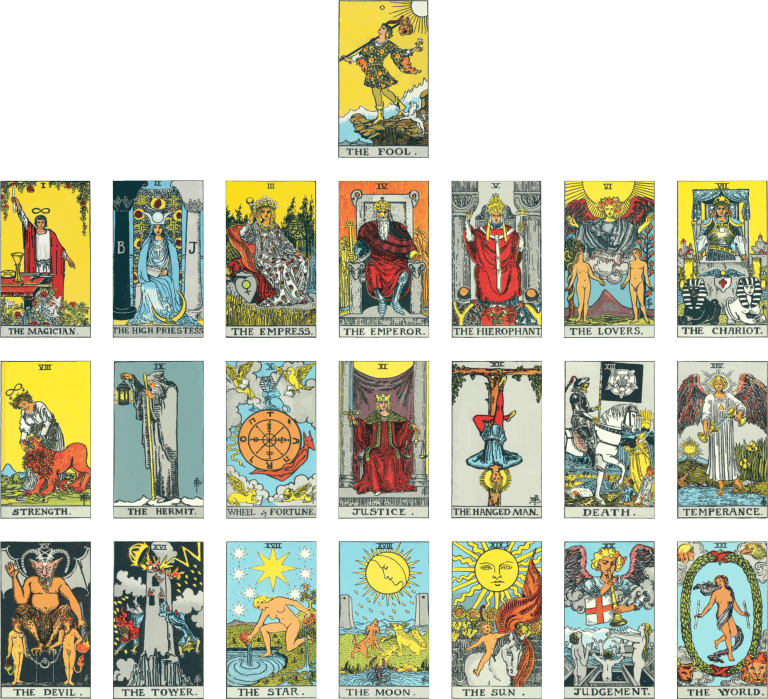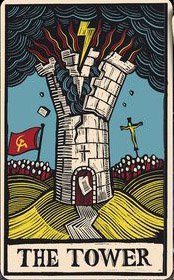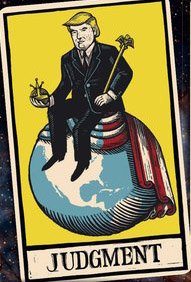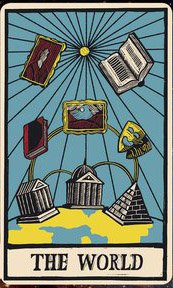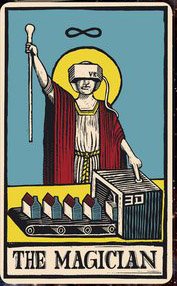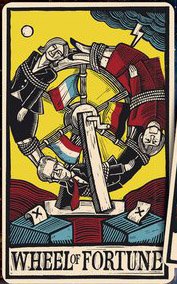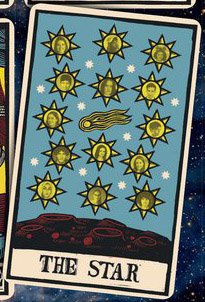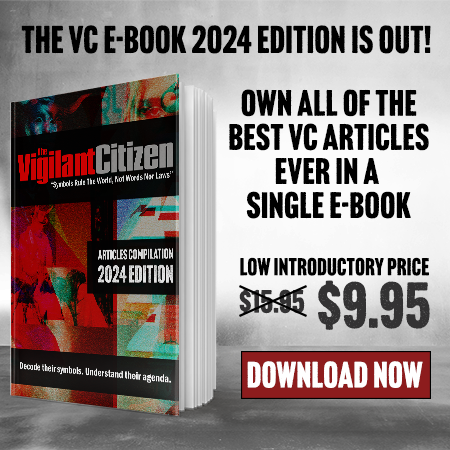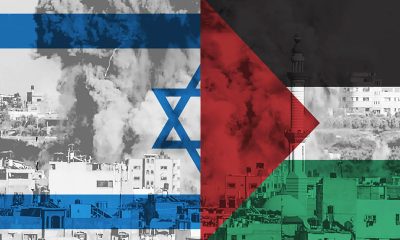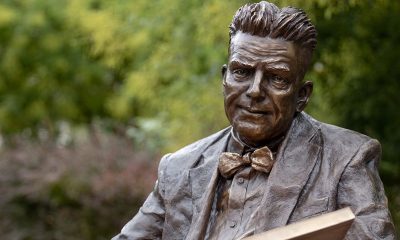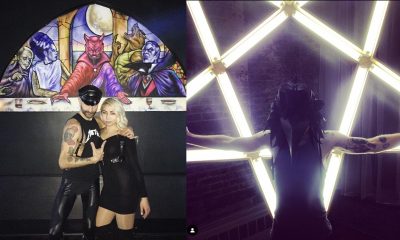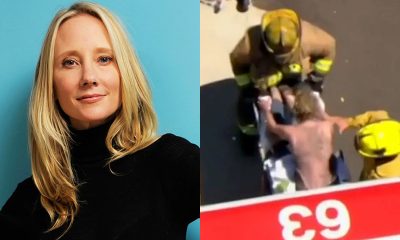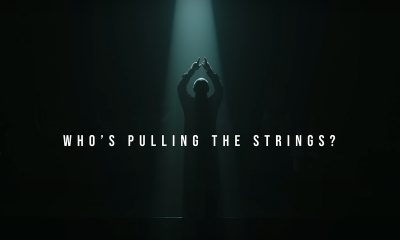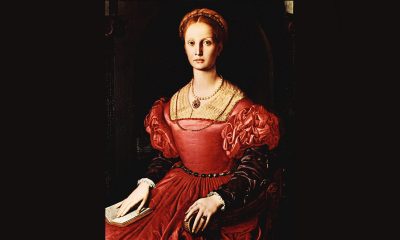Vigilant Reports
The Economist’s “The World in 2017” Makes Grim Predictions Using Cryptic Tarot Cards
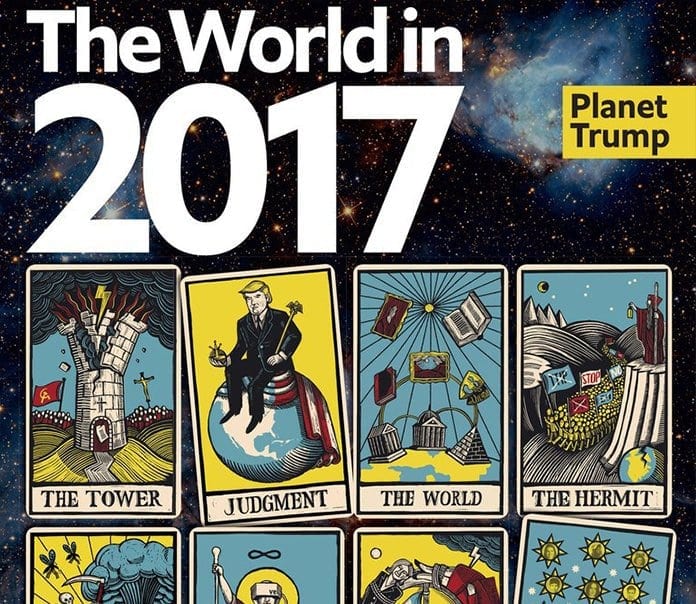
The influential publication The Economist released its traditional end of year edition where it predicts events of the coming year. The 2017 edition is presented in a very occult fashion: A tarot deck modified with cryptic symbols.
If you thought that 2016 was not a great year, well The Economist does not seem too optimistic about the year to come. Indeed, in its “The Year in 2017” cover, the publication predicts death and turmoil in a dark occult context, using tarot cards and cryptic symbolism.
When The Economist released The World in 2015 cover, I simply had to write an extensive article about it because it alluded, through symbolism, to various agendas of the elite. Indeed, The Economist is not your typical magazine, it is a ‘prestigious’ publication owned by powerful people. As I’ve written in the 2015 article:
“I wouldn’t normally dedicate an entire article analyzing the cover of a publication, but this isn’t any publication. It is The Economist and it is directly related to the world elite. It is partly owned by the Rothschild banking family of England and its editor-in-chief, John Micklethwait, attended several times to the Bilderberg Conference – the secretive meeting where the world’s most powerful figures from the world of politics, finance business and media discuss global policies. The outcome of those meetings is totally secret. It is therefore safe to say that the people at The Economist know things that most people don’t.”
While some images on that 2015 cover referred to obvious events, others were extremely cryptic – even ‘coded’ – as they were never satisfactorily explained.
This year’s edition is even more enigmatic. It uses the tarot to predict the year to come. Here it is.
The first thing one can say about this cover is that it is occult. The tarot is indeed said to contain within its symbolism the entirety of occult mysteries transmitted by secret societies. Also, considering that the cards of the Major Arcana are also referred to as “trumps”, it was a great way to emphasize that next year will be very influenced by Trump’s election.
The Tarot
Using tarot cards to predict the future, in a publication that is owned by the occult elite, is quite fitting. Through the centuries, several versions of the tarot were created. However, most of them contain the same symbolism which alludes to specific esoteric concepts. Occultists agree that the tarot originates from Ancient Egypt.
“The Book of Thoth was a résumé of the esoteric learning of the Egyptians. After the decadence of their civilization, this lore became crystallized in a hieroglyphic form as the Tarot; this Tarot having become partially or entirely forgotten or misunderstood, its pictured symbols fell into the hands of the sham diviners, and of the providers of the public amusement by games of Cards.”
– Manly P. Hall, The Secret Teachings of All Ages
The tarot is an extremely dense compilation of occult concepts and symbolism, encompassing Freemasonry, numerology, the kabbalah, and alchemy.
“Many symbols appearing upon the Tarot cards have definite Masonic interest. The Pythagorean numerologist will also find an important relationship to exist between the numbers on the cards and the designs accompanying the numbers. The Qabbalist will be immediately impressed by the significant sequence of the cards, and the alchemist will discover certain emblems meaningless save to one versed in the divine chemistry of transmutation and regeneration.”
– Ibid.
The Economist’s cover was inspired by the Rider-Waite deck which was published in 1909. Here it is.
The Rider-Waite deck was conceived by the prominent occultist A.E. Waite who was an initiate and a master of several secret societies.
“Waite joined the Outer Order of the Hermetic Order of the Golden Dawn in January 1891 after being introduced by E.W. Berridge. In 1893 he withdrew from the Golden Dawn. In 1896 he rejoined the Outer Order of the Golden Dawn. In 1899 he entered the Second order of the Golden Dawn. He became a Freemason in 1901, and entered the Societas Rosicruciana in Anglia in 1902. In 1903 Waite founded the Independent and Rectified Order R. R. et A. C. This Order was disbanded in 1914. The Golden Dawn was torn by internal feuding until Waite’s departure in 1914; in July 1915 he formed the Fellowship of the Rosy Cross, not to be confused with the Societas Rosicruciana.”
Therefore, by using the Rider-Waite deck to predict 2017, The Economist reveals the true force that makes these predictions happen: The occult elite.
Let’s look at the cryptic symbolism found on each card.
The Tower
The first card of ‘planet Trump’ is The Tower. By doing so, the cover begins predictions on a rather grim note. Not unlike The Tower of the Rider-Waite deck, the card features a tower being destroyed by lightning from above, a reference to the Tower of Babel being destroyed by God. This card is usually associated with danger, crisis, destruction, and liberation.
“This card follows immediately after The Devil in all Tarots that contain it, and is associated with sudden, disruptive, and potentially destructive change.”
– Bill Butler, Dictionary of the Tarot
On The Economist’s cover, the tower is surrounded by mobs of people holding a red communist flag and a crucifix. Why are communists and Christians facing each other while the tower is being destroyed? Is The Economist alluding to the two forces that are said to have propelled Trump to power – Russia and conservative Christianity?
Or does it maybe refer to the growing divide between two opposite groups – globalists/liberals/socialists versus nationalist/religious/conservatives?
On the tower’s door is nailed a piece of paper. This appears to be a reference to Martin Luther’s Ninety-five Theses.
A painting of Martin Luther nailing his Theses on the door of All Saints’ Church in Wittenberg.
Martin Luther’s thesis criticized various aspects of Catholicism, a gesture that prompted Protestant Reformation. Is The Economist predicting a difficult year for the Catholic Church?
Judgement
Donald Trump is sitting on the globe while holding an orb and a scepter – objects referring to a monarchy. In other words, Trump is the king of the world. Monarchy and democracy are political systems that are extremely different. The Economist appears to be predicting that Trump will rule the world like a monarch.
Furthermore, why is this image associated the Judgement card? The Economist’s card looks nothing like the Judgement card from the Rider-Waite deck which depicts the Angel Gabriel on Judgement Day as described by the Book of Revelation.
The Book of Revelation mentions several times the term ‘kings of the Earth’. They are sometimes said to worship Christ and in other passages, they are said to worship the Beast.
“And I saw the beast, the kings of the earth, and their armies, gathered together to make war against Him who sat on the horse and against His army.”
– Revelation 19:19
When portrayed in a negative context, these ‘kings of the earth’ suffer the judgment symbolized in the seven seals, trumpets, and bowls, finally concluding with their defeat by the rider of the white horse in chapter 19. Strange fact: There’s a white horse on the cover.
The World
Once again, The Economist’s The World card looks nothing like its Rider-Waite counterpart. In tarot, The World card represents an ending to a cycle of life, a pause in life before the next big cycle beginning with the fool. It is also associated with the concept of ‘unification’.
On The Economist’s version, we see images representing arts, literature, and theater floating above three monuments. Two of them feature classical architecture found in Rome, Greece, Washington DC and Paris (the monument in the middle resembles the Panthéon). The Egyptian pyramid brings to the card a mystical, esoteric dimension.
These three monuments perfectly represent the historical influence of the ‘occult elite’ on society. Claiming to be the guardians of the Mysteries originating from Ancient Egypt, passed down through secret societies such the Knights Templar, the Freemasons, the Rosicrucians and the Bavarian Illuminati, the elite has been the secret force behind profound cultural and political changes.
“The direct descent of the essential program of the Esoteric Schools was entrusted to groups already well-conditioned for the work. The guilds, trade unions, and similar protective and benevolent Societies had been internally strengthened by the introduction of a new learning. The advancement of the plan required the enlargement of the boundaries of the philosophic overstate. A World Fraternity was needed, sustained by a deep and broad program of education according to the “method”. Such a Fraternity could not immediately include all men, but it could unite the activities of certain kinds of men, regardless of their racial or religious beliefs or the nations in which they dwelt. These were the men of “towardness”, those sons of tomorrow, whose symbol was a blazing sun rising over the mountains of the east.”
– Manly P. Hall, The Keys of Freemasonry
On The Economist’s card, lines connect these the three buildings of power with symbols representing popular culture. In other words, the occult elite produces a single and cohesive popular culture that is found throughout the world.
The Hermit
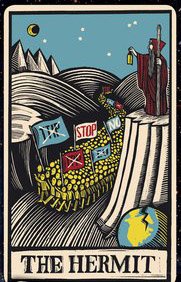 While The Hermit card in the Rider-Waite deck is rather simple, The Economist’s version is dense and full of turmoil. It depicts hordes of people marching while holding flags rejecting the TTIP (Transatlantic Trade and Investment Partnership), the TPP (Trans-Pacific Partnership) and the EU (European Union). Other flags simply say ‘STOP’ and ‘NO’ which reflect general of globalization and the agenda surrounding it. Hermits live in seclusion of society and these people want to live in seclusion from the world order.
While The Hermit card in the Rider-Waite deck is rather simple, The Economist’s version is dense and full of turmoil. It depicts hordes of people marching while holding flags rejecting the TTIP (Transatlantic Trade and Investment Partnership), the TPP (Trans-Pacific Partnership) and the EU (European Union). Other flags simply say ‘STOP’ and ‘NO’ which reflect general of globalization and the agenda surrounding it. Hermits live in seclusion of society and these people want to live in seclusion from the world order.
At the bottom right of the card is a cracked globe, another ominous symbol referring to profound division and destruction.
Silently overseeing the scene is the same hermit found on the Rider-Waite deck who holds a staff and a lantern. What does he represent? Here is the esoteric meaning of The Hermit.
“The hermit thereby personifies the secret organizations which for uncounted centuries have carefully concealed the light of the Ancient Wisdom from the profane. The staff of the hermit is knowledge, which is man’s main and only enduring support. In the pseudo-Egyptian Tarot the hermit shields the lamp behind a rectangular cape to emphasize the philosophic truth that wisdom, if exposed to the fury of ignorance, would be destroyed like the tiny flame of a lamp unprotected from the storm. Man’s bodies form a cloak through which his divine nature is faintly visible like the flame of the partly covered lantern. Through renunciation – the Hermetic life – man attains depth of character and tranquility of spirit.”
– Manly P. Hall, The Secret Teachings of All Ages
The Hermit, therefore, represents the occult elite, the ‘secret organizations’ that have ruled the world for centuries and concealed occult knowledge from the profane (i.e. the masses). Is the hermit silently watching the masses getting excited about nationalism because it falls ultimately falls into a greater scheme? No matter what the case may be, the next card is not very optimistic.
Death
This card cannot be more ominous. Not unlike the Rider-Waite version, the card features a skeleton sitting on a white horse. On The Economist’s version, a nuclear mushroom is in the background which probably alludes to tensions to come between nuclear powers around the world (a mushroom was also on the 2015 cover). Other calamities are found on the card such as mosquitoes (a reference to zika-type viruses?) and a dead fish in a dried up river (the growing water crisis around the world?).
Strange detail: The card features the same ‘blazing sun’ in the background found on The World card (with inverted colors).
“The field in which death reaps is the universe, and the card discloses that all things growing out of the earth shall be cut down and return to earth again.”
– Manly P. Hall, The Secret Teachings of All Ages
The Magician
This card is very similar to its Rider-Waite counterpart. In both cases, the magician has one hand towards the heavens and another towards the earth – a reference to the hermetic axiom “as above, so below”. In The Economist’s version, the magician is wearing a VR (virtual reality) helmet while working a 3D printer.
As Arthur C. Clark’s third law stipulates:
“Any sufficiently advanced technology is indistinguishable from magic.”
On this card, 3D printing appears to be a ‘magical’ solution to create low-cost housing solutions – an industry that is already ramping up. VR will undoubtedly be a big thing in 2017 as several products are set to be released in the coming years.
The infinity symbol found above the magician can refer to the limitless possibilities of both technologies: One can create infinite virtual worlds while the other can greatly expand the limits of material resources.
The Wheel of Fortune
This card refers to the upcoming elections in three European nations: France, Germany and the Netherlands. Marine LePen, Angela Merkel, and Geert Wilders are attached to a spinning wheel next to election ballots.
In the Rider-Waite deck, the Wheel of Fortune card features an eight-spoked wheel – the Cycle of Necessity – an esoteric symbol referring to the cyclic nature of life.
The world of politics is also cyclic and, according to The Economist, a smiling Marine Le Pen is heading towards the top of the wheel while a pouting Merkel is upside down and heading down. To make things worse, Merkel is next to dark cloud while Le Pen is under a nice clear sky. Is Merkel heading towards a bitter defeat? Will her controversial “open door policy”, which allowed the entrance of over a million refugees in Germany in the past years, cause her to lose?
Conversely, will Le Pen profit from the nationalist momentum started by Brexit and the election of Trump? Will France become another powerful country ruled by the ‘far-right’ and nationalism? While Le Pen’s political party Le Front National used to be shunned and described as racist, it might gain political legitimacy in 2017.
Geert Wilders, who is another “far-right” candidate who is described by media as being “populist” and “racist”. Things are looking up for him as well.
While those who reject globalism might perceive this change in political scenery as a victory, the symbolism of this card appears to say: “It is all part of the plan”. Indeed, political parties, whether they be ‘far-right’ or ‘far-left’ are all part of the same ever-turning wheel, the “cycle of necessity” that puts into power whoever is necessary at that specific time. In other words, the momentum of nationalism might be planned by the elite to accomplish specific goals.
The Star
In tarot, The Star card represents joy, optimism, and feeling connected with the divine. In The Economist’s version, the faces of 15 young people appear inside yellow stars. I could not identify any of these faces. Some of them appear to be in their early teens.
Who are these specific young people? Will they be rising stars in 2017? Why is there a shooting star in the center? Strange card.
In Conclusion
The tarot is known by all yet it conceals, in plain sight, a knowledge that has been hidden from the ‘profane’ for centuries. The Economist’s tarot cover accomplishes the same goal: It is published across the world yet its true meaning will only be fully understood by few.
The cover was heavily inspired by the tarot deck created by A.E Waite, a prominent occultist and founder of secret societies. By referring to this specific deck and by using its very hermetic symbolism, The Economist is pointing towards the true philosophy of those ruling the world.
Like the tarot, The World in 2017 predicts various trends to come while hiding, in symbolism, the true mechanisms at work. Indeed, several of these cards imply the existence of a ‘hidden hand’, an outside force that does not simply observe what is happening – it is silently guiding the world where it needs to go.
Get an e-mail notification as soon as a new article is published on The Vigilant Citizen.
-
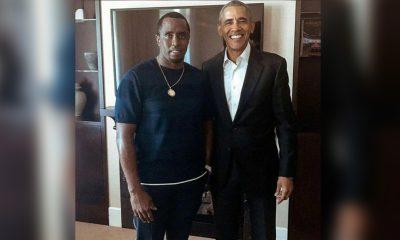
 Latest News2 months ago
Latest News2 months agoThe Controlled Demolition of Diddy
-
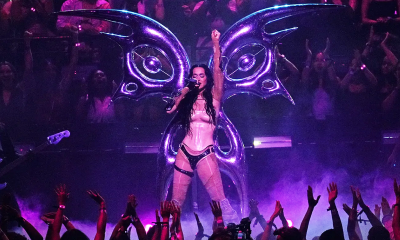
 Music Business2 months ago
Music Business2 months agoThe Hidden Meaning of Katy Perry’s Highly Symbolic Performance at the 2024 VMAs
-
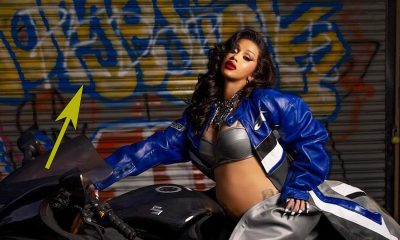
 Pics of the Month2 months ago
Pics of the Month2 months agoSymbolic Pics of the Month 09/24
-
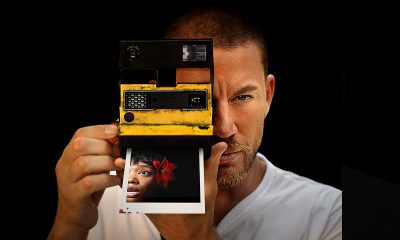
 Movies and TV1 month ago
Movies and TV1 month agoAn In-Depth Look at the Hidden Meaning and Symbolism in “Blink Twice”
-

 Pics of the Month1 month ago
Pics of the Month1 month agoSymbolic Pics of the Month 10/24
-

 Music Business3 months ago
Music Business3 months agoSomething’s Terribly Wrong With Sabrina Carpenter and her Video “Taste”
-

 Latest News2 weeks ago
Latest News2 weeks agoKamala’s Campaign Was Objectively the Worst in Recent History
-

 Movies and TV2 months ago
Movies and TV2 months agoAn In-Depth Look at the Dark Messages and Symbolism in “Longlegs”
